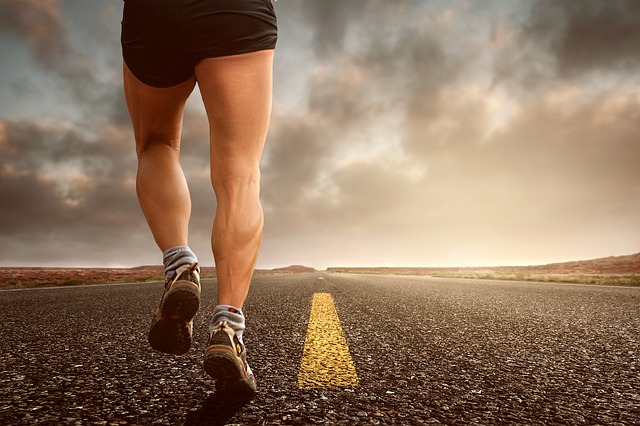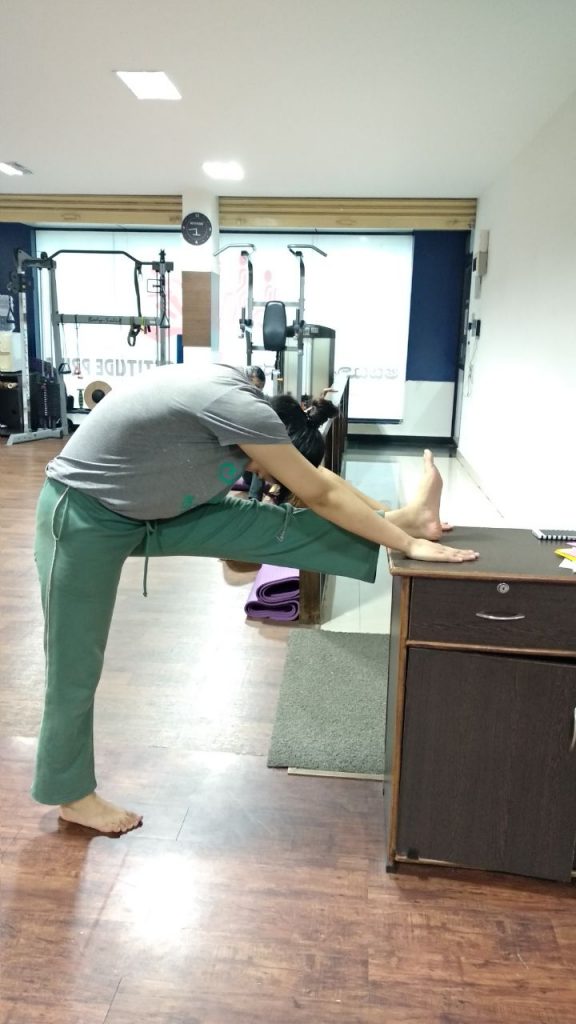Plantar fasciitis is a term you might have heard of. But you probably never experienced the condition…..until now.
Have you ever woken up in the morning and found it hard to walk to the bathroom because your feet hurt so much?
How about getting up from your office chair and walking to the water cooler being a painful experience?
If you have ever suffered from these, then you probably have plantar fasciitis (pronounced ‘fash-eee-eye-tis).
Today I will talk about why this condition is making your feet painful and how you can manage it with some simple steps.
What Is Plantar Fasciitis?
Plantar fasciitis is one of the most recognised and common causes of pain in the feet.
Specifically, affected people have pain in their heel. The pain is because of inflammation of tissue under the foot called plantar fascia.
The Plantar Fascia
The plantar fascia is a thick band of tissue that is present at the base of the foot.
It is attached to the heel bone and then fans out and attaches to the toes. A description of this is given in the image below.

The primary role of this fascia is to provide support to the foot. It also acts like a ‘shock absorber’. when we place our feet on the ground.
When too much strain is placed on the fascia, it can result in small tears in the tissue. This leads to tissue damage and inflammation.
When the plantar fascia becomes red and inflamed, it can lead to pain. This is called plantar fasciitis.
Causes
Other than excessive strain, there are no clear causes of plantar fasciitis. However, there are certain risk factors that increase the chance of this affecting you.
1. Age
Most common between 40 to 60 years, though younger individuals can be affected.
2. Exercise
If you take up ‘impact’ exercises such as running etc, then this can place some strain on the fascia. Sports that involve jumping can also lead to pain.
3. Faulty arch
When you place your foot on the ground and look at the inner aspect of it, you will notice an arch. If this is either too high or if you have flat feet, you risk injury to the fascia and developing plantar fasciitis.
4. Standing for long hours
If you are constantly on your feet at work or at home, then you risk injury and pain. Teachers are particularly prone.
5. Being overweight
For every extra kilogram that you weigh, you place an additional 4 kilos of weight on your lower limbs. Excessive weight and obesity does not spare your feet, and you will likely suffer from pain and inflammation.
Symptoms Of Plantar Fasciitis
Stabbing pain is the most common description of pain. It usually affects the heel, though some people find that it affects the entire foot.
The pain is worse early in the morning after waking up and placing the feet on the ground.
After a night’s rest, the plantar fascia that is inflamed can become quite taut and tensed. When you place your foot on the ground, it stretches this tendon and can lead to pain.
As you continue to walk, the fascia begins to relax and this reduces the pain.
In other words, pain from plantar fasciitis reduces as you exercise or walk. It worsens after resting for a while.
For example, say you woke up in the morning with pain in the feet. You walk a few steps, do your household chores and then walk to your office.
You sit at your office desk and after an hour or so decide to drink a glass of water. When you walk towards the water cooler, your feet will hurt again.
Once again, they get better after you walk a while.
Some people may experience pain after they finish exercise.
Besides the pain, there are no other symptoms of plantar fasciitis.
Diagnosis
A diagnosis can be confidently made by the physician from clinical history alone. There are no specific tests that will confirm the diagnosis.
Sometimes, an x-ray of the foot may be performed.This might show the presence of a ‘calcaneal spur’ – a thickened part of the plantar fascia attached to the heel bone.
In rare cases, an MRI scan may be performed.
Treatment Of Plantar Fasciitis
It is unwise to leave the pain untreated. This is because it can lead to a change in the posture adopted when walking, which in turn can affect the hip and knee joints.
The best way to treat plantar fasciitis is to avoid excessive foot strain.
But that can be hard.
Instead, you could try certain stretching exercises that will loosen up the tissue and reduce the pain. Painkillers may be prescribed.
There are also certain devices called ‘orthotics’ that can help reduce strain and pain.
Let’s look at some home remedies first.
Home Remedies For Plantar Fasciitis
Before we dive into different treatment options, there are some simple home remedies you could try first.
Make sure you avoid excessive strain to the plantar fascia. Wear comfortable and soft slippers at home and when venturing outside.
If you are an athlete, you may require insoles to maintain the arch of your foot when exercising. You may need to make sure you change your footwear now and again.
For runners with plantar fasciitis, you would want to consider changing your shoes after you have completed around 500 to 600 km of total running in them. Wearing worn out shoes can worsen the problem.

After you have completed your exercise routine, apply ice to the foot. This will reduce the acute inflammation and reduce the chances of pain later on.
Ensure you maintain a healthy body weight. The lighter you are, the lesser the stress on the fascia.
If you are having trouble, you could try wearing insoles for your footwear. These can help with the pain to some extent.
You could check out some insoles by clicking here.
Finally, do some of the stretches I have described below.
Stretching Exercises
You could perform some of the these simple exercises to stretch the plantar fascia to loosen it up.
1. Hamstring Stretch

2. Calf Stretch

3.Plantar Fascia Stretch

4. Tibialis Anterior Stretch

Physiotherapy
If the above home remedies do no work, you could consider physiotherapy.
I spoke with Dr Gladson Johnson of Attitude Prime in Bangalore, who had the following to say –
”The very common reasons behind plantar fasciitis are quite simple – improper cool down stretching and irregular indulgence in strengthening exercises”.
This leads to tightening of the hamstring muscles, which in turn leads to stiffness of the calves and the plantar fascia.
I would like to thank Dr Johnson for sharing the above images with me.
Night Splints
These are supports for the foot that are worn at night. They keep the plantar fascia stretched through the night, making it soft and less taut in the early hours of the morning.
Other Treatments
If the above treatments fail, there may be other ways to manage plantar fasciitis.
Steroid injections may be given, but these should not be given repeatedly as they can weaken the fascia.
High frequency ultrasound wave therapy, also called extracorporeal shock wave treatment, may be tried. This could reduce inflammation and pain, but the technique is still in it’s early stages.
Finally, if all else fails, surgical release of the fascia may be performed. Here the fascia is disconnected from the heel bone completely. However, it might weaken the arch support of the foot.
Closing Remarks
Plantar fasciitis is a painful problem that can affect quality of life. Some people do not get the relief they expect despite trying painkillers. Some of the measures described above will help.
- Understanding Iron Deficiency Anemia: A Guide for Patients - May 31, 2025
- CT Coronary Calcium Score: A Guide for Patients - January 7, 2024
- Gastric Antral Vascular Ectasia (GAVE) – Causes, Diagnosis, and Treatment - August 5, 2023


Thank you for your advice.
I walk quite a lot but still I have an obase tummy because of which I have started skipping regular dinner and I am managing with only fruits and curds. I have also have painfull corns on both my feet. Can you kindly suggest solutions to both my concerns.
Weight loss requires you to eat less and exercise more. In other words, you must lose more calories and consume less calories. Please take a good look at your diet and see if you can make a switch to low calorie alternatives. With regards to your corns, you may want a podiatrist or general surgeon.